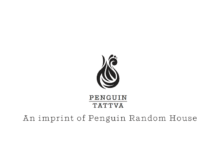The second Jaipur BookMark began on the afternoon of 21 January 2015 at the picturesque Narain Niwas Palace not far from the main Jaipur Literature Festival at the Diggy Palace. Within the B2B sessions on the two days, publishing professionals discussed content moving across geographies through traditional and digital platforms as well as content locked up in libraries and archives. Publishers and experts also talked of content changing form and becoming interactive with crossmedia adaptations. The needed strategy of evolving a national reading policy in the country was also discussed.
On the first day, “Is publishing bankable?” was discussed by a panel including noted Yes Bank economist Shubhada Rao, publisher and printer Bikash Niyogi of Niyogi Books, veteran publisher Manas Saikia of Speaking Tiger, Australian publisher Henry Rosenbloom of Scribe, Atiya Zaidi of Ratna Sagar and Aditi Maheshwari of Vani Prakashan.
The moderator Naresh Khanna began by asking publishers a hard question — Why does the actually sizable Indian publishing industry, sometimes appear to be a cottage industry? Is there a structural problem? Speaking of recent economic developments in the country, Dr Shubada Rao spoke about the Indian economy in reference to the education and publishing industries. She said that “The economy is showing some exuberance,” and that with the current demographics there appears to be a great window of opportunity for publishers for the next four or five years provided they act with alacrity. She added, “Although the publishing industry can be expected to grow annually by 25 to 28%, this opportunity requires a structured approach and rapid action by publishers.”
Australian publisher Henry Rosenbloom said that the trade publishing industry is a heterogeneous and high-risk business. A publisher builds her list and takes care that all books have equal potential to succeed. However, each product is different and it is extremely difficult to predict which book will be a success, hence the concept of a bank evaluating risks as in other businesses may not be either possible or even desirable.
On the first day, “Is publishing bankable?” was discussed by a panel including noted Yes Bank economist Shubhada Rao, publisher and printer Bikash Niyogi of Niyogi Books, veteran publisher Manas Saikia of Speaking Tiger, Australian publisher Henry Rosenbloom of Scribe, Atiya Zaidi of Ratna Sagar and Aditi Maheshwari of Vani Prakashan.
Aditi Maheshwari, was equally candid in her response stating that publishing in India was not really big and prosperous. “It has to be tightly managed by entrepreneurs themselves. Despite being for fifty years in business and growing to be one of the top five Hindi language publishers, Vani Prakashan can only dream of having a chief financial officer. We manage our business finances primarily through internal resources.”
Atiya Zaidi of Ratna Sagar made the point that a well run educational publishing house has no shortage of financial support. Nevertheless there is a need for greater understanding from both publishers and bankers since even a fast growing educational publishing house such as Ratna Sagar, increased institutional financial support may be needed when the huge amount of valuable legacy content has to be adapted and recreated for new interactive media.
The moderator in one of his interventions questioned the bankability of an industry that seems to have no real numbers, “Calculating revenues on the basis of paper consumed each year, it is estimated that the Indian publishing industry is worth far more than all the globally published data available. However although IppStar has real data based on its on-going book publishing industry in India project, the industry does not seem to want to invest in primary research and the industry bodies have so far done nothing to establish credible and bankable data.”
Veteran publisher Manas Saikia of Speaking Tiger, supported Khanna’s assessment of the scale of the Indian publishing industry adding that India has the world’s largest typesetting and premedia outsourcing operations. Moreover, he pointed out this STM activity is attributed to the Information Technology industry and not as a publishing industry outcome. Saikia also spoke about a FICCI initiative in developing research of the Indian publishing industry.
An insight that seemed to emerge from the discussion was the need for the government to ease its way out of the educational publishing business. While the government must build schools and even buy books and content, and in some cases subsidize both, commercially developed educational publishing can strengthen the publishing industry. In India, it’s ironical that while the government dominates educational publishing, the building of schools and colleges is increasingly becoming a thinly disguised private industry.
In response to the panellists and questions from the audience, Shubadha Rao said that bankers need to look at the business and accounting practices of publishers and regular cash flows and a healthy bottom-line to finance any industry. “We have made a small beginning in lending to publishers and already have an exposure of `150 crores (US$ 25 million) in this segment . . . . Some accommodation can be made for longer payment cycles provided the business cycle is consistent and is covered by adequate margins. Yes Bank has offered help to the publisher community and we are now looking for a new customer base. . . With some innovative thinking, even intellectual property could be looked at as collateral.”
The discussion at JBM seemed to be a good first step in bringing bankers and publishers together on a shared platform. There is obviously room for both industries to learn more about what the other needs or wants. Clear lessons also emerged such as the possibility of looking afresh at publishing cash flows and industry growth cycles.
The discussion at JBM seemed to be a good first step in bringing bankers and publishers together on a shared platform. There is obviously room for both industries to learn more about what the other needs or wants. Clear lessons also emerged such as the possibility of looking afresh at publishing cash flows and industry growth cycles.


















